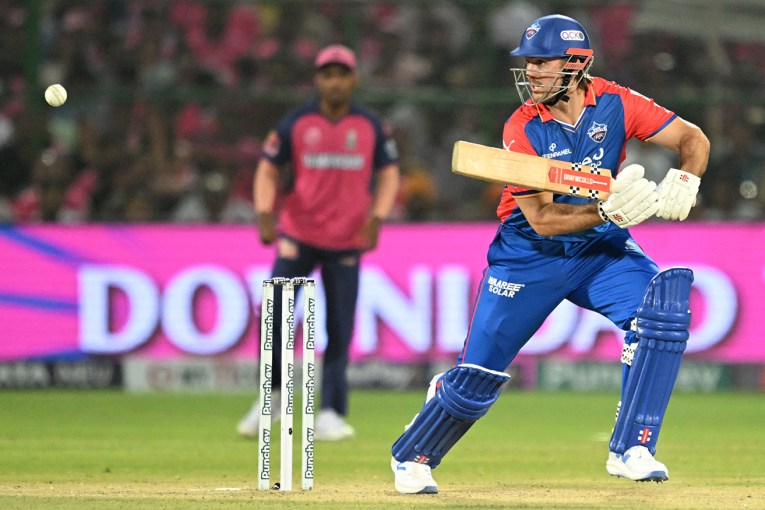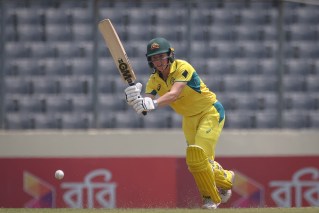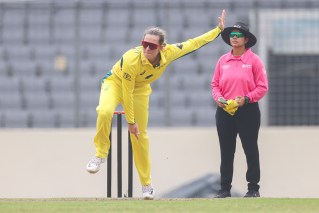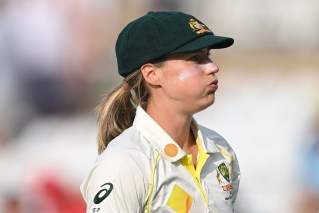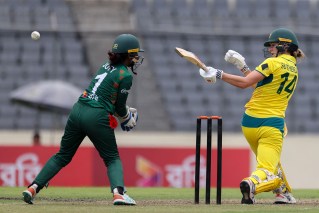Why is Shaun Marsh a protected species?
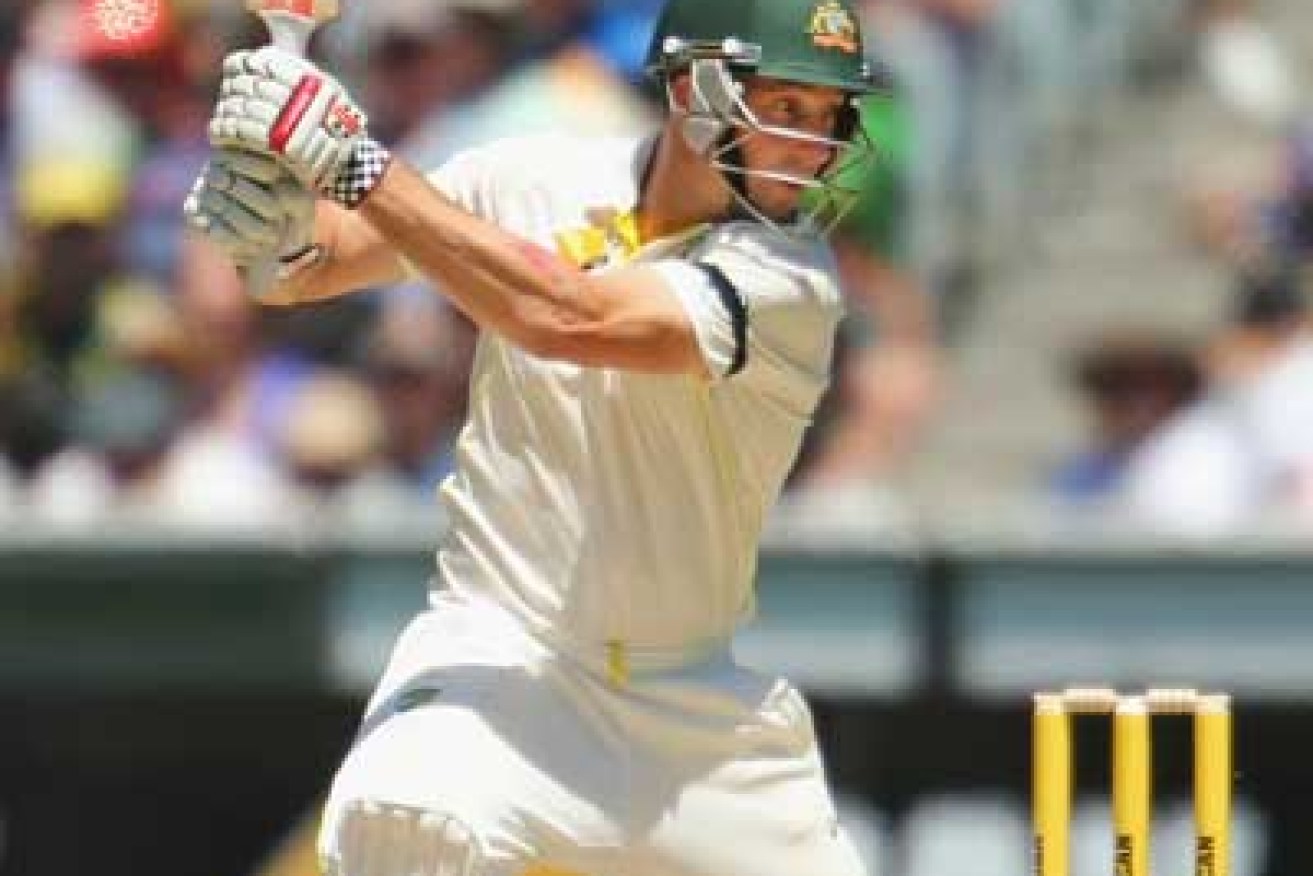
Marsh has consistently proven to be
In Australia’s long and proud 137-year Test cricket history, there has never been a batsman quite like Shaun Edward Marsh.
Marsh is 31-years-old. He has been playing first-class cricket for nearly 14 years.
His career first-class average stands at 36.99.
• Final day at the MCG an insult to the audience
• MS Dhoni retires from Tests
He has scored just 12 first-class hundreds – less than half the number that the late Phillip Hughes had scored before his tragic death three days before his 26th birthday.
Marsh has failed to pass 44 in 12 of his last 14 Test innings. Despite shouldering no substantive bowling duties, Marsh has a long history of hamstring, calf and back injuries.
Yet he has been backed like no other batsman of his generation by Australia’s last three National Selection Panels chaired by Andrew Hilditch, John Inverarity and Rod Marsh (no relation to Shaun) respectively.
When Michael Clarke’s injuries ruled him out of this summer’s last three Tests, Shaun Marsh got the nod to replace him in the Test XI, a decision made all the more remarkable by the fact that Marsh was not (and still is not) fit to throw the ball properly.

Marsh after dropping a regulation catch in Brisbane. Photo: Getty
Consequently, the stand-in Australian captain, Steve Smith, had no choice but to field Marsh in the slips or the in-field.
The result: in the second Test at the Gabba, Marsh dropped Murali Vijay twice in India’s first innings – once at third slip when Vijay was on 36 and once at short extra-cover when Vijay was on 102.
Both chances were regulation at Test level. The chance at third slip was a bog-standard edge that went low and slightly to Marsh’s favoured left side. He didn’t even have to dive to reach it. All he had to do was bend down quickly enough to get his hands to the ball.
He failed to do so and therein lay the problem: Marsh’s history of hamstring, calf and back injuries means that he finds it difficult to quickly bend down – a physical action that every competent slipper must be able to perform.
The chance that Marsh grassed at short-extra cover was even easier. Vijay mistimed a drive and popped the ball up in a high, loopy arc straight towards Marsh who failed to time his jump up in the air properly – again, unsurprising given his history of hamstring, calf and back injuries – and put down a simple chance.
Vijay went onto score 144 of India’s first-innings total of 408. Thus, Marsh’s two drops cost his team a cumulative total of 108 runs. Unfortunately for him and his team, he was unable to make up for that damage with the bat.
With Australia’s first innings delicately poised at 3/208 with Marsh and Smith at the crease and well-set on 32 and 51 respectively, India’s right-arm quick Varun Aaron switched from around to over the wicket to the left-handed Marsh with immediate results – Marsh attempted to pull a shortish ball angled across him, but succeeded only in top-edging the ball up into the stratosphere.
Then, Marsh was the beneficiary of an unexpected and rather large slice of luck: India’s best fielder, Ajinkya Rahane, dropped the catch. But Marsh failed to make the most of his second life — just four balls later, as he has so many times over the last 14 years in Shield cricket, he flashed at a good length ball between off and sixth stumps delivered by a right-arm quick operating over the wicket and nicked off.
Marsh’s contribution to Australia’s final innings pursuit of 128 for victory at the Gabba wasn’t much better. He walked in at 3/85 with Australia’s final innings top-scorer and anchor, Chris Rogers, having just been dismissed for 55.
With the Indian captain MS Dhoni stacking the slips cordon to maximise his team’s chances of taking another wicket, Marsh played positively, striking three boundaries on his way to a run-a-ball 17.
Then, with only the out-of-form Brad Haddin, his injured younger brother Mitchell and the Australian bowlers left in the sheds and another 14 runs required for victory, Marsh received an early Christmas present from Umesh Yadav: a short of a length ball sliding down leg, the kind of delivery that, in the absence of a fine fine leg, goes for four at any level of cricket. Marsh gloved it to the keeper.

Marsh walks off after being run out for 99 in the Boxing Day Test. Photo: Getty
Television viewers who tuned in in time to see Marsh’s dismissal in Australia’s first innings of the Boxing Day Test could’ve been forgiven for thinking that they were seeing a replay of Australia’s first innings of the previous Gabba Test during a Melbourne rain break – Marsh was out for the same score (32) in the same fashion (nicking off with a 45-degree flash at a good length ball on fifth stump bowled by a right-arm quick operating over the wicket).
Yet again, his empirically-proven propensity for repeating the same mistakes put his team in a difficult position – 4/184 on day one of a Test on an MCG pitch that can only be described as a road – only to be rescued by the batting heroics of Smith and the Australian tail.
When, in Australia’s second innings, Marsh passed 50 for the first time in six Test innings, some of his fans on social media were quick to crow that he’d “saved” his team and “won” the Test series for his country.
Neither of those hyperbolic statements is supported by the evidence.
Marsh walked in at 3/131 in Australia’s second innings with his side already holding a first-innings lead of 196 and a 2-0 lead in the four-Test series. The MCG pitch could’ve doubled for the south-eastern freeway – the one completed Shield game there this summer produced 1275 runs for the loss of just 26 wickets and this summer’s Boxing Day Test ultimately yielded 1487 runs for the loss of 35 wickets.
The Indian bowling attack that Marsh faced has proven itself to be incapable of taking 20 Australian wickets on Australian soil.
Marsh ended up scoring 99 – an innings that secured his spot in the Test XI for the foreseeable future but, upon closer examination, produced more questions than answers.
Like he has throughout the course of this series, Marsh cashed in on Dhoni’s inexplicable Plan A for his right-arm quicks bowling to him: around the wicket and back-of-a-length, a plan that indulged Marsh’s archetypal Western Australian strengths square of the wicket.

Marsh been consistently backed by Australian selectors. Photo: Getty
But whenever the right-arm Indian quicks were allowed to bowl in a conventional Test fashion at Marsh, that is, over the wicket, boring away on a good length between off and sixth stumps with a slips cordon in place, he struggled immensely, as he has whenever he’s been faced with that same bowling plan in Shield cricket.
Such sustained periods of conventional Test bowling consistently produced unforced errors from Marsh during his 99. On two separate occasions, he French cut balls just wide of his leg-stump and, on another occasion, he left a straight ball from Ishant Sharma that rapped him on the pads. Time after time, he flashed at and narrowly missed edging length balls on sixth stump with a 45 degree angled bat, leading Bill Lawry to observe on commentary: “That’s the problem with Shaun Marsh – that shot”.
Finally, on 99, after playing five consecutive dots against five consecutive Yadav balls bowled from over the wicket between off and sixth stumps, Marsh blocked a ball to the left of mid-off and set-off for a suicidal single.
With three stumps to aim for, Virat Kohli made no mistake and Marsh was run out for 99. Dean Jones observed on Fairfax’s radio commentary: ““It’s his [that is, Marsh’s] own fault. He panicked. It sums up his career in some ways – the wrong decision at the wrong time.”
Marsh’s decision becomes all the more wrongful when one looks at the team context.
On the final morning of the Boxing Day Test, his captain sent him out, unbeaten on 62 and being the last specialist batsman, with clear instructions to score quickly for the first 10 to 15 overs in order to set up an early declaration that would enable Australia to press for the win.
For whatever reason, Marsh was unable to execute those instructions which meant that Australia, as Ryan Harris later explained, “didn’t have enough runs” to declare early on the final day.
Despite his strangely slow scoring on the final morning, it appears that Australia’s push for victory was put on hold to give Marsh the opportunity to achieve the personal milestone of a first Test hundred on Australian soil as, 20 minutes before lunch, Smith sent out a message to Marsh telling him that he had until the break to get his ton.
Marsh duly squandered the opportunity and Australia drew the Boxing Day Test for the first time in 17 years.
The uncomfortable truth for Australia’s selectors is that the only thing that will silence Marsh’s legions of critics – which, by now, seems to include every single cricket-watching member of the Australian public east of the Nullarbor – is Marsh averaging 50-plus at Test level for at least three years, a feat that nearly 14 years of empirical data informs us is entirely beyond his capabilities.
